#hiking clothing
Explore tagged Tumblr posts
Photo

Long Walks – 9to5chic
10 notes
·
View notes
Text
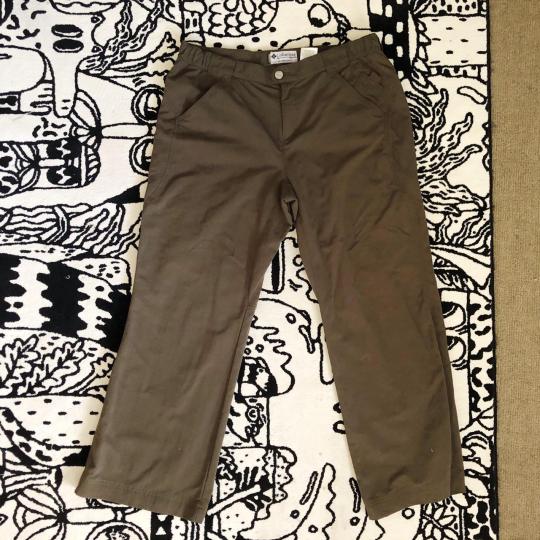

Brown Khaki Hiking Pants - Columbia from GhoulWorld
#depop#columbia sportswear#hiking pants#ranger#outdoor#hiking clothing#clothing#outdoor clothing#outdoor pants
38 notes
·
View notes
Text
10 Essential Tips for Beginner Hikers: Start Your Journey Right
Discover essential beginner hiking tips to kickstart your outdoor adventures. Learn about gear, safety, and trail etiquette for a confident start on the trail.
Starting your first hiking trip can be thrilling and fulfilling. But, it’s key to be well-prepared and have the right mindset. These 10 essential tips for beginners will set you up for success, whether it’s a day hike or a longer backpacking trip. Key Takeaways Follow the Leave No Trace principles to respect the outdoors and minimize your impact Choose a beginner-friendly trail that matches…
#beginner hiking tips#elevation gain#first aid#hiking backpack#hiking boots#hiking clothing#hiking safety#hiking shoes#hiking trails#leave no trace#map reading#offline maps#respect the outdoors#trail difficulty
0 notes
Text
Clothes for Backpacking: The Ultimate Guide to Gear Up for Your Adventure
Image Source: Unsplash Are you planning a thrilling backpacking trip into the wild, unpopulated areas of the world? As an experienced backpacker, you know that having the right hikers clothing is essential for a comfortable and successful journey. In this comprehensive guide, we will walk you through everything you need to know about choosing the best backpacking clothing for your…

View On WordPress
0 notes
Text

"What does the star beating in your chest hunger for?"
"I wished it could be over."
Reference under the cut

#in stars and time#isat spoilers#start again: a prologue#the art drawer#fanart#isat siffrin#sasasaap siffrin#redrawing my favorite genshin art with them because why not#also kinda considered using the curtain call quest title from Inversion of Genesis because. theater#ALSO THE WAY SIFFRIN LOOKED SO SCANDALOUS WHILE I WAS ON THE LINEART PHASE LIKE HOW#amazing how that was achieved while drawing someone fully clothed#Wanderer looked less scandalous and HIS CLOTHES ARE HIKING UP
896 notes
·
View notes
Text

AHHH I’m so happy so many of you like the au,,, there will be more,,, for now here’s Basch and Elise ,,, a little family picture
#hetalia#aph liechtenstein#hws liechtenstein#aph switzerland#hws switzerland#they didn’t actaully hike to zermatt they probably flew in or some shit#that’s why they dressed not in hiking clothes yes#or maybe they drove from the resort nearby WHO KNOWSSSS
628 notes
·
View notes
Text
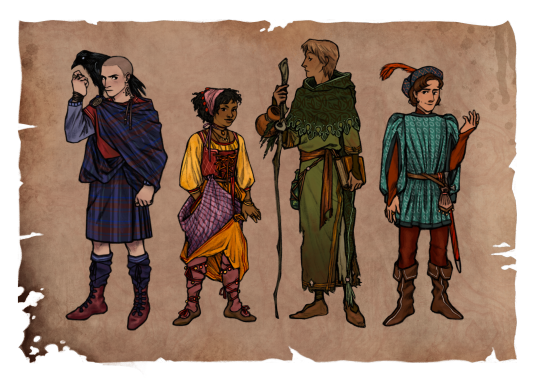
psuedo-medieval fantasy AU ✌️✌️✌️
everyone give it up for ronan's great kilt i had to google so many diagrams to try and figure out how they worked. also big thank you to my mom for gansey's dumb hat btw she was like 'you HAVE to keep the dumb hat'
#trc#my excuse for any historical inaccuracy here is that they're all actually just at a REALLY pretentious renfaire#i DID use references though blue's hiked skirts have historical precedent for peasant women as long as there were hose beneath#i will say the exposed stays are Inexcusable and Not Period but w/e. also she should not be showing that much hair.#also ronan's not wearing black bc black clothing was really hard to produce in the 1400s or whenever the fuck bc it took so much dye#ronan lynch#adam parrish#blue sargent#richard gansey#my art
391 notes
·
View notes
Text
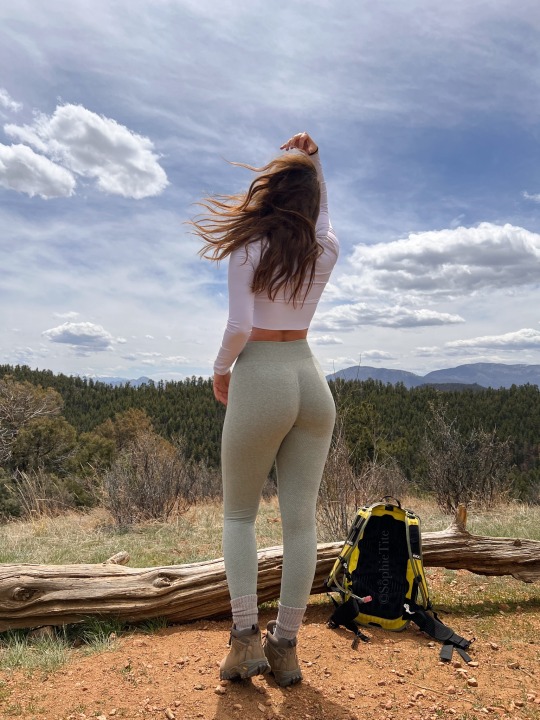
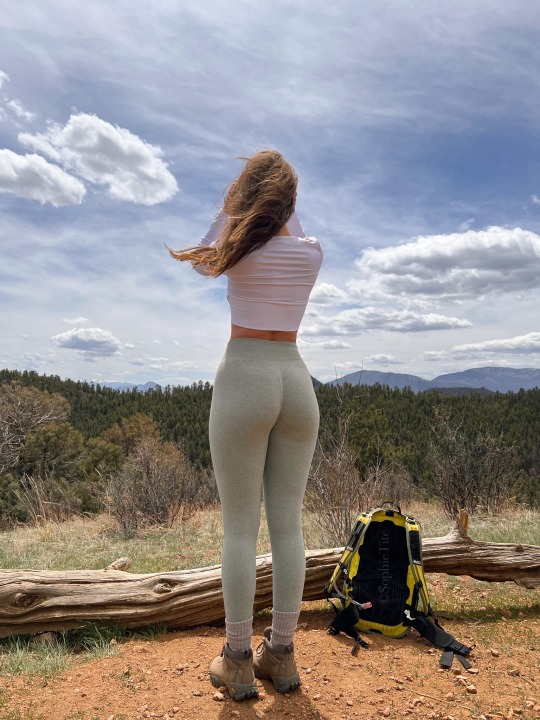
When you're trying to take pics on the trail but the wind already made alternative plans. Thats okay though because the sky looks painted on 😮💨
#natural girl#beautiful figure#nature girl#sexy outdoors#beautifulgirlsinnature#girls in nature#nature goddess#mountaingirl#day hike#hiking trail#leggings#girls in leggings#girl butts#girls who hike#legs for days#beautiful views#sophietite#outdoorgirl#get outside#the great outdoors#naturelovers#mountain view#hiking#crop top#sexy figure#gorgeous#so hot and sexy#see me naked#tight clothes#nice and tight
216 notes
·
View notes
Text
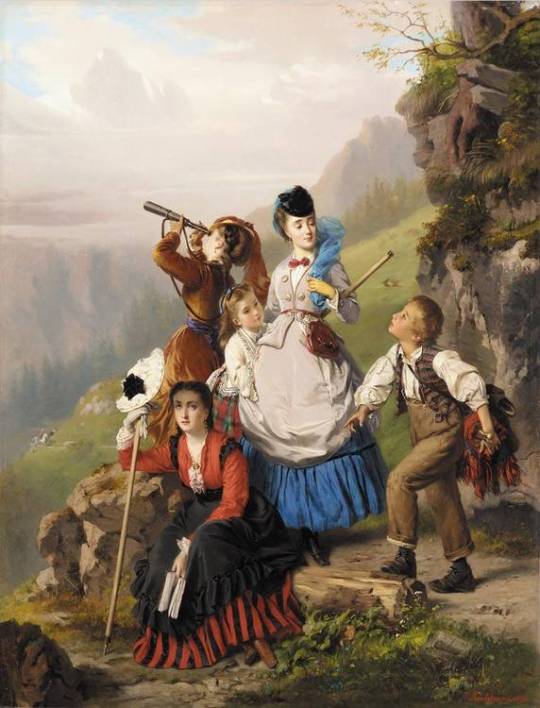
Charles Edouard Boutibonne (1816-1897) "The Young Mountaineers" (1868) Academicism
#paintings#art#artwork#genre painting#landscape#charles edouard boutibonne#fine art#academicism#french artist#genre scene#hiking#hike#mountain#mountains#clothing#clothes#female portrait#portrait of a girl#portrait of a woman#male portrait#portrait of a boy#portrait of a man#1860s#mid 1800s#mid 19th century#a queue work of art
131 notes
·
View notes
Text
my favourite thing to do when designing outfits for characters is for sure thinking like. “can i imagine this guy taking the time to put this on in the morning.” cuz this DOESNT mean that characters won’t ever have fancy and fun outfits, but i feel like it does mean that if they DO then that’s also gotta say something abt the character
#and it could be a BUNCH of different things. maybe this character just likes dressing up. maybe it’s religious. maybe it’s to impress#etc etc#STUFF LIKE THAT#i love when you can just like. read into characters by looking at what they’re wearing or what they’ve got in their rooms n stuff#if your dnd adventurer who essentially hikes around is wearing like. a bunch of fancy clothes then maybe that implies that this guy is like#willing to go through pretty significant discomfort and inconvenience just to look good#ITS RLY FUN I THINK
100 notes
·
View notes
Text




Pennsic Day 5- they had a gothic cathedral 🏰
behind the scenes: me doing some sewing for a vendor in their trailer and more photos of the cathedral in camp!




#medieval clothing#medieval reenactment#society for creative anachronism#fourteenth century#historical costuming#mine#going through my pics and I realized I never posted anything from Pennsic#also the dresses are all handmade by me and the skirt hikes were made by a friend!
29 notes
·
View notes
Text
Weekends should be three days I think: one day for chores, one day for rest, and of course, one day for hiking.
#i need to go shopping for clothes this weekend#but I also desperately want and need to write#but then......when hike? 😭
55 notes
·
View notes
Text
so @seasidesandstarscapes and I were chatting and a beautiful idea was born for a new coxstroke AU: CAMPING
Don and Bobby are strangers, both avid hikers, who find themselves horribly lost deep in the wilderness a little too close to winter (both of them are there for their own personal reasons, but mostly they just needed to escape for a little while).
ENTER A SNOWSTORM
Both of them end up seeking shelter in the same empty cabin and now they're stuck until the snow melts with limited supplies. At first they are both a little irritable about being stuck with someone they don't know but then they need to work together to survive. Maybe they fall into the cold water and have to strip off their wet clothes and huddle naked under a blanket so they don’t get hypothermia (salix you’re getting credit for that one) WHO KNOWS
Anyway i have a google doc open and i’m ready to WRITE
#tbitb but make it camping#can’t wait to stare at society era jack in his silly hiking clothes#the boys in the boat#jack mulhern#bobby moch#don hume#luke slattery#coxstroke
10 notes
·
View notes
Text

Survival Clothing What to Wear:
It would be great to know where we will be and what the temperature will be like when the SHTF. But that ain't a gonna happen and you can't carry everything for every little situation. Here are some things to consider as a general rule for the unexpected and the planned outing:
Wool vs Cotton: Wool is best for cold weather while cotton is best for warmer weather. Wool is a powerful insulator. In fact, it's the second-best natural insulator next to goose down. It also repels water and wicks moisture. The lanolin, with its antibacterial, antimicrobial and water repellant properties, can irritate skin and can't be removed simply through washing. It's more durable and more wrinkle-resistant than cotton and it hardly retains odors and stains. Cotton, on the other hand, is a warm-weather fabric. Like wool, cotton has moisture-wicking properties. But the difference between wool vs. cotton is that cotton is a light, breathable fabric that helps you stay cool in the summer. It also provides excellent protection against the ultraviolet rays of the sun. It's hypoallergenic, easy to care for, and affordable.
Survival Clothing Principles:
Your body helps regulate body temperature. Clothing should work WITH your body. Exercise can help keep you warm in the winter and hydration (water intake) will help keep you cool in the summer.
Bulky or tight clothing is bad for survival. Synthetic [lighter/thinner] "fabrics" may be better options.
What you have with you when SHTF will be your survival clothes. Keep your "survival" clothing near you at all times (in a bug-out bag that is WITH YOU).
Dress for the function, not the fashion/form; the proper clothing for the situation.
Dress to blend in with the environment (gray man).
Related Resources: Choosing the Correct BugOut Clothes Clothing for Survival and BugOut Situations The Survival Clothing - Must-Haves for Any Situation Stretch Shoes/Boots With Ice Know How to Make Primitive Footwear Making Wilderness/Survival Snowshoes Winterizing Toes and Fingers Primitive Needle and Thread Clothes When You Are Living Off Grid Clothing to Protect from Sun and Insects Insect Protection: [Link 1] [Link 2] Clothing Repair Kit (and What to Do if You Don't Sew) Learn to Make Your Own Clothes From Scratch How to Dry Wet Clothes in the Wilderness Emergency Insulation Materials to Stay Warm or Cool
[11-Cs Basic Emergency Kit] [14-Point Emergency Preps Checklist] [Immediate Steps to Take When Disaster Strikes] [Learn to be More Self-Sufficient] [The Ultimate Preparation] [P4T Main Menu]
This blog is partially funded by Affiliate Program Links and Private Donations. Thank you for your support.
#clothing for survival#dressing for SHTF survival#prepare4tomorrow#prepping#prepper#survival#shtf#prepper clothing#survival clothing#clothes#prepared#survivor#survivalist#survivalism#camping#hiking#insulation#preparedness#disaster#crisis
41 notes
·
View notes
Text

If you're cold, they're cold - bundle up your local goo man no matter how much he says he doesn't need it. Nerys please I don't feel cold it's fine what no I'm not "blushing" don't be ridiculous.
#star trek ds9#kiraodo#kira nerys#odo#ds9#star trek#kat arts#fanart#ODO CAN'T BLUSH HE DOESN'T HAVE BLOOD SO HE MELTS SEND TWEET#it suddenly got VERY COLD here and I'm like 'screw it we ball and we draw faves in clothing I have to wear now'#color scheme inspired by a hike I went on last week#and how the sun came in through the trees and had a ring of yellow with purple shadows
38 notes
·
View notes
Text


Traded in the hiking clothes for something a little more dinner appropriate. Now I'm just enjoying this wine until it's dark enough to see the meteor shower. . . .as long as I can stay awake that long 🤷♀️
#personal#banff adventure#ate all the pizza#drinkin' all the wine#ok but not being in sweaty hiking clothes is pretty nice 😂
61 notes
·
View notes